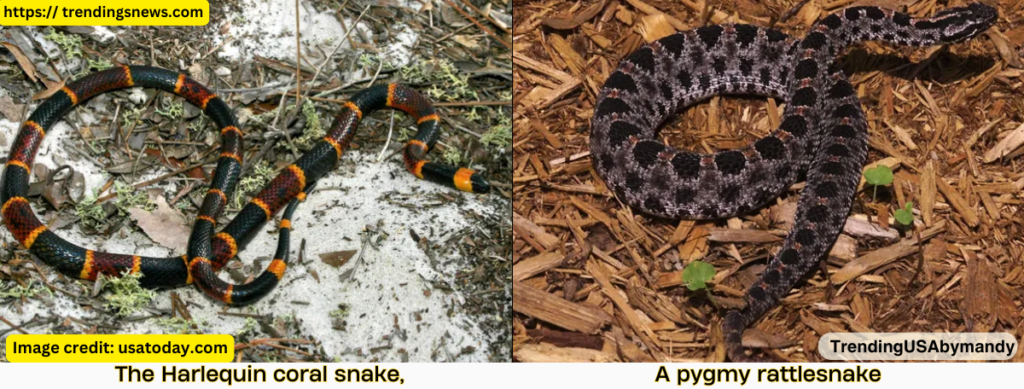Afraid of Snake Bites? Learn how to protect yourself from venomous snakes with essential tips on identification, prevention, and first aid. Follow two crucial rules to stay safe and avoid common mistakes during a snake bite emergency.
Understanding Snakes: Venomous vs. Non-Venomous
Snake bites are a serious concern, especially in regions where venomous snakes are prevalent. Whether you’re hiking, camping, or simply enjoying the outdoors, knowing how to protect yourself from snake bites can be life-saving.
In this comprehensive guide, we’ll explore everything you need to know about venomous and non-venomous snakes, their habitats, how to identify them, and the two crucial rules to follow to stay safe.
Plus, we’ll cover first aid tips, treatment options, and how to avoid common mistakes during a snake bite emergency.
What Makes a Snake Venomous?
Venomous snakes possess specialized glands that produce venom, which they inject through fangs when they bite. This venom can cause severe tissue damage, paralysis, or even death if not treated promptly.
Non-venomous snakes, on the other hand, lack these glands and are generally harmless to humans.
Common Venomous Snakes in the U.S.

In the United States, the most dangerous venomous snakes include:
- Eastern Diamondback Rattlesnake
- Timber Rattlesnake
- Cottonmouth (Water Moccasin)
- Copperhead
- Coral Snake
These snakes are found in various regions, with Florida being a hotspot due to its diverse ecosystem.
Afraid of Snake Bites? The 2 Rules to Stay Safe from Snake Bites
Rule 1: Avoid Deliberate Interaction with Snakes
A study by the University of Florida revealed that one-third of snake bite victims were bitten while intentionally interacting with venomous snakes. Many of these individuals were unaware that the snakes they handled were dangerous.
How to Follow This Rule:
- Never attempt to handle or capture a snake, even if it appears non-venomous.
- Teach children to stay away from snakes and report sightings to adults.
- Use tools like sticks or hooks to move objects in snake-prone areas.
Rule 2: Stay Vigilant in Snake Habitats
Snakes are often found in tall grass, rocky areas, and near water sources. Being aware of your surroundings can significantly reduce the risk of accidental encounters.
How to Follow This Rule:
- Wear sturdy boots and long pants when hiking or working outdoors.
- Avoid walking through tall grass or reaching into areas where snakes may hide.
- Use a flashlight at night to spot snakes on trails or roads.
Afraid of Snake Bites? Know what to Do If You’re Bitten by a Snake
Step 1: Stay Calm and Call for Help
Panicking can increase your heart rate, causing venom to spread faster. Call 911 immediately and seek medical attention.
Step 2: Identify the Snake (If Possible)
Take a photo of the snake from a safe distance. This can help medical professionals determine the correct antivenom.
Step 3: Avoid Harmful First Aid Methods
- Do not use a tourniquet.
- Avoid trying to remove the venom by suction, as this method is ineffective and can cause further harm.
- Do not cut or slice the bite area.
Step 4: Keep the Affected Area Immobilized
Elevate the bitten limb and keep it as still as possible to slow the spread of venom.
Preventing Snake Bites: Tips and Tricks
Know Your Environment
Snakes are more active during warmer months. Be extra cautious in areas where they are likely to hide, such as under rocks, logs, or debris.
Use Protective Gear
Wearing gloves and boots can provide an additional layer of protection when working outdoors.
Educate Yourself
Learn to identify venomous snakes in your area. The Florida Museum of Natural History offers a step-by-step guide to help you distinguish between species.
The Global Impact of Snake Bites
According to the Centers for Disease Control and Prevention (CDC), an estimated 7,000 to 8,000 people are bitten by venomous snakes in the U.S. annually.
If you’re afraid of snake bites, it’s important to know that while only five deaths occur each year, long-term injuries are common, with 10-44% of rattlesnake bite victims experiencing lasting damage.
Globally, snakes are responsible for up to 125,000 deaths annually, particularly in regions with limited access to antivenom.
Understanding these risks can help you stay prepared and less afraid of snake bites by knowing how to prevent and respond to them effectively.
20 States Affected by Broccoli Recall: A Reminder to Stay Vigilant
While snake bites and food recalls may seem unrelated, both highlight the importance of staying informed and prepared for unexpected risks.
Recently, a broccoli recall has impacted 20 states across the U.S., with health authorities urging consumers to check their refrigerators for affected products.
Just as you would take precautions to avoid snake bites—like staying alert in snake-prone areas and avoiding unnecessary risks—it’s equally important to stay updated on food safety alerts.
Whether it’s checking for recalled produce or knowing how to respond to a snake bite, being proactive can save you from potential harm.

